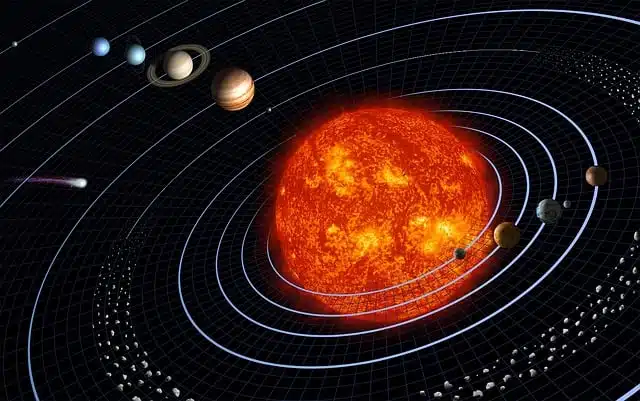
The Sun is a luminous star.
The Sun , that source of light and energy that shines high in the sky, gives us heat and tans our skin, has the particularity of being the luminous star that is closest to Earth . It was formed, according to experts, around 4.5 billion years ago and stands out for being the central axis of our planetary system, since the Earth and other celestial bodies orbit around it.
The energy radiated by this star is essential for life, since it is captured and used by beings with photosynthetic characteristics and maintains the climatic processes on which the existence of human beings and the rest of the species that live on the surface depends. land.
Likewise, the use of solar energy as a source of electrical power is one of the most relevant discoveries in terms of the preservation of the planet, since it is inexhaustible, clean and safe. However, there are different challenges to overcome in order to impose this system over the traditional one; The greatest of all lies in the fluctuating nature of this irradiation, which results in variations in intensity depending, for example, on the time of year.
Composition of the Sun
According to astrophysicists, the Sun is composed of a center or nucleus , which covers about 139 thousand kilometers of the solar radius and allows the verification of the thermonuclear effects that spread the energy produced.
It also has a radiant zone , another zone known as convective , a photosphere , a chromosphere , a corona and a sector called solar wind (the flow of particles emitted by the atmosphere of the same star).

The solar system has the Sun as its center.
skin cancer
The perception of the sun by human beings is divided into a body that gives life , which is the protagonist of poetry and a source of energy and happiness, and a threat to our health . Skin cancer, a popular reason for fear of the star, is a group of diseases that have many differences and that only share the physical part they attack.
This fear is based on the fact that ultraviolet rays, which come from sunlight, represent the greatest risk of developing this type of cancer . When they come into contact with the skin, they cause mutations in cellular DNA that remain for years. The part of the population that most commonly suffers from this disorder is white-skinned people.
Skin cancer occurs in several forms, the most common types being basal cell carcinoma , squamous cell carcinoma (very likely to be cured) and malignant melanoma (the most serious case of all). Symptoms that should draw attention to those exposed to risk factors are chronic ulcers or irritations that do not show a healing process, moles and other birthmarks that grow in size or change color .
Expressions that use the term sun
It is interesting to mention that there are several terms and concepts linked to the Sun. For example, sunbathing refers to a person who stands in a particular place to receive direct sunlight , which will allow them to tan . Beaches and squares are ideal places for this activity.
Working from dawn to dusk , on the other hand, is a idiom that in principle expresses an arduous work activity, which extends from dawn until the sun sets. However, the specific times of day when such work begins or ends are not relevant; The weight falls on the large number of hours.
The expression "not leaving someone in the sun or in the shadow" is also common, which means following them everywhere.
Finally, it should be noted that the sol was a monetary unit that the Peruvian territory used in the past.
